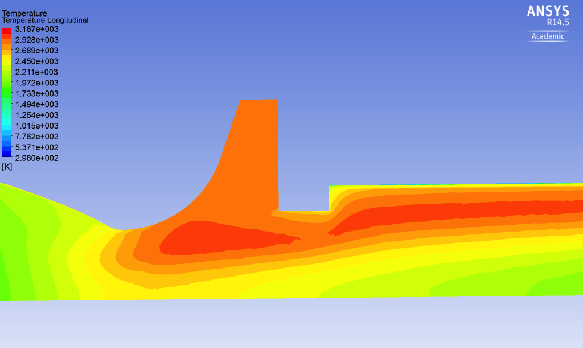
To date (May 2014) the Stratos II propulsion team has had two static test campaigns of the DHX-200 Aurora at TNO. Both campaigns resulted in the motor rupturing the chamber and the test being stopped prematurely. This issue and the solution to it has been talked about in previous blog posts. What was not mentioned in these posts however, was the treasure-trove of data which these ‘failed’ tests provided. The team has been pouring over this data, looking for ways to optimise the motor in any way they can in addition to addressing the problem of chamber rupture.
The test data up until the motor ruptured indicates that the injector performance was excellent, i.e. providing the right amount of mass flow to the chamber. This allowed the team to investigate the internal combustion ballistics at realistic flight conditions. It was found was that the motor combustion efficiency achieved in this test was around 80%. This rather low performance, while common for nitrous oxide hybrids of this size, can be improved upon. To do this, the team developed a CFD model of the combustion chamber to analyse the internal combustion ballistics.

Figure 1: CFD model displaying the temperature distribution in the post combustion chamber of the DHX-200 Aurora experimentally tested at TNO. The flow direction is from right to left.
Firstly, the design used during the hot fire experiments was analysed. The model suggests that a significant fraction of the nitrous oxide stays in the core of the motor and has very little interaction with the fuel on the outside. This can be seen in Figure 1 where the core flow is relatively cold while closer to the fuel, better mixing is occurring and hence higher temperatures are achieved. This unburnt nitrous oxide in the core flow is not contributing as much energy to the flow as it could if it were properly mixed, resulting in poor motor efficiency and lower than expected thrust. If left unchanged, this would result in Stratos II being unable to reach the target altitude of 50km.
To achieve better mixing, and hence higher performance, different mixer geometries were investigated over the last months. After analysis of 7 different designs, the best compromise of performance and manufacturability was selected.

Figure 2: CFD model displaying the temperature distribution in the post combustion chamber of the revised DHX-200 Aurora design using the redesigned mixer. The flow direction is from right to left.
As seen is Figure 2, the mixer forces the core flow of nitrous oxide to the outside of the chamber where it inevitably mixes with yet unburnt fuel. The mixture then flows into a short post combustion chamber where it is given some time to react before being ejected through the nozzle to produce thrust. The result is a far hotter burning, and therefore more efficient motor. CFD predicts an increase in motor efficiency in excess of 15%. This figure will be validated in the upcoming test campaign at the DLR test facility in Trauen, Germany in late May 2014.

2 Responses
Hey tobi, when did you become a CFD expert? 😉
I must have gotten inspired during my time at CISAS, University of Padua. Great folks!
Comments are closed.